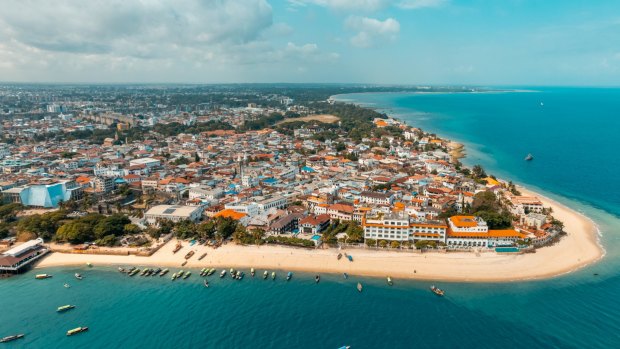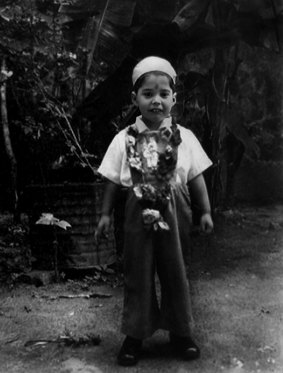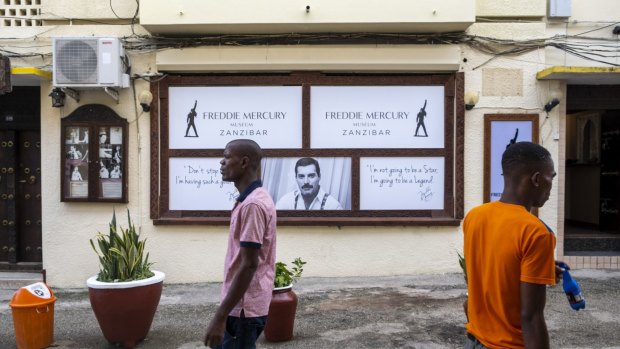This was published 3 years ago
Stone Town, Zanzibar, Tanzania: Freddie Mercury museum where a little silhouetto of the singer can still be found

Zanzibar offers a complex blend of African, Arab, European and Indian heritage.Credit: iStock
It's been 30 years since the death of Queen's Freddie Mercury and his birthplace has a museum dedicated to the singer.
"Scaramouche! Scaramouche! Will you do the fandango?" I cry as I jump into a cab at Zanzibar's Abeid Amani Karume International Airport. Not out loud, of course; just inside my head, where Freddie Mercury's baroque classic Bohemian Rhapsody is striking the highest of high notes. And just as well I keep it bottled up, for it turns out driver Nashun is baffled (and possibly a little offended) by this obsession foreign visitors have with that Zanzibari son, who left the island of his birth as a youth and became a global sensation in a far-off land.
"Why do you all like this Freddie so much?" he asks, casting me a puzzled look. "Much better Dr Livingstone, I presume."

Freddie Mercury, age 6. Credit: Alamy
Dr David Livingstone – whose post-nominal title derives from the words uttered to him by explorer Henry Stanley upon their meeting in the depths of Africa – will be oft-mentioned during my sojourn on this island.
The Scottish physician, missionary and explorer is revered here for his anti-slavery advocacy at a time when Zanzibar was a major port for the Middle East's slave trade; his star outshines that of the rock star who was born Farrokh Bulsara in Stone Town in 1946, after his Parsi-Indian parents – followers of Zoroastrianism, a religion which originated in Persia – moved here from Gujarat. The Bulsaras were part of a generations-long inflow of migrants to this island off the coast of Tanzania; its earliest inhabitants were fishermen from the mainland.
"The first colonialists to come to Zanzibar were the Persians – you know, Freddie Mercury's people – then the Portuguese, then people from Oman and, finally, the British," Nashun says.

The Freddie Mercury museum in Stone Town.Credit: Getty Images
"But we really appreciate Dr Livingstone, I presume. He treated us really well."
After Livingstone died his body was returned to Britain, but his heart was buried, as per an earlier request, beneath a tree in a remote corner of Zambia. Mercury, on the other hand, appears to have taken his heart with him when he left Zanzibar after the outbreak of the revolution which unseated the Arab elite in 1964. The Bulsaras settled in England; Mercury seldom mentioned the obscure island of his birth.
It's impossible nonetheless to overlook the influence this place would have had on the young Farrokh, with its complex blend of African, Arab, European and Indian heritage and its fecund bedrock and physical beauty.
Beyond the UNESCO World Heritage-listed Stone Town spreads an elongated landmass fringed by mangrove swamps, white beaches and a tourmaline sea speckled with the archipelago's smaller islands; the interior is knotted with spice plantations and forests of mahogany. It's a deeply affecting place, drowsy, lush, exotically scented; fertile beginnings for a young imagination.
But the minarets and church spires rising above Stone Town, and the Parsi fire temple his family attended, infer a deeply religious and conservative culture, one that wouldn't have tolerated Mercury's homosexuality. His education, too, was doctrinaire: after attending boarding school in India, he returned to Zanzibar to complete his schooling at St Joseph's Convent School; it wasn't long after that he left the island for good.
I see a little silhouetto of that troubled young man in Stone Town, all walls and courtyards and labyrinthine alleyways that might lead you in the wrong direction. There on Shangani Street is the nondescript block of flats in which the Bulsaras lived; above the doorway is a brass sign set in carved wood: Mercury House.
On each side of the doorway is a display of faded memorabilia. It will be years before this building is transformed into the Freddie Mercury Museum and local tour guides see the potential in offering tours of the star's childhood haunts. The acclaimed movie Bohemian Rhapsody will eventually see to all that.
This title song, still swelling operatically in my head, seems intimately interwoven with Zanzibar. Mercury's conflict over his sexuality was borne out in this masterpiece, writes Lesley-Ann Jones in her book Freddie Mercury: The Definitive Biography; the composer Tim Rice told her it was Mercury's "coming out song", an oblique confessional in a community where such truths couldn't be divulged.
In this context the crumbling walls of Stone Town assume a sinister heft; they press inwards like a straightjacket. A muezzin strikes up, his mellifluous call to prayer invoking Mercury's own exhortation: "Bismillah! We will not let you go!"
But unlike the slaves memorialised so poignantly at Stone Town's old slave market, Mercury did indeed break free – from the place of his birth, and from the conventions by which his early life was governed.
Strolling Stone Town's seashore at sunset, I see the young Farrokh in those boys jumping from the pontoon into shimmering waters. Anywhere the wind blows, he might have hummed as he watched the dhows setting off for the night, their sails dissolving like faint bass clefs into the horizon.
FLY
Qantas will resume flights from Sydney to Johannesburg three times per week from January 4, 2022. Passengers must be vaccinated or have a confirmed medical exemption. See qantas.com Kenya Airways flies from Johannesburg to Zanzibar. See kenya-airways.com/glo/en. For destination health requirements check smartraveller.gov.au
STAY
Ocean-view rooms at Tembo House from around $245 twin share. The hotel's Freddie Mercury Apartments start from around $180 twin share. See tembohotel.com
VISIT
The Freddie Mercury Museum is open daily. See freddiemercurymuseum.com. Intrepid's 12-day Road to Zanzibar journey from Nairobi to Stone Town takes in the Serengeti National Park, Ngorongoro Crater and Dar es Salaam. Prices from around $3145 per person. See intrepidtravel.com/au
Catherine Marshall was a guest of Peregrine, now replaced by Intrepid Premium. See intrepidtravel.com/au/introducing-intrepid-premium
Sign up for the Traveller Deals newsletter
Get exclusive travel deals delivered straight to your inbox. Sign up now.